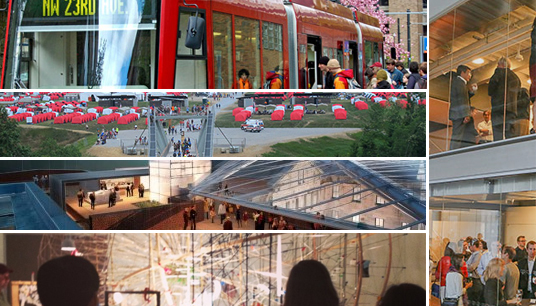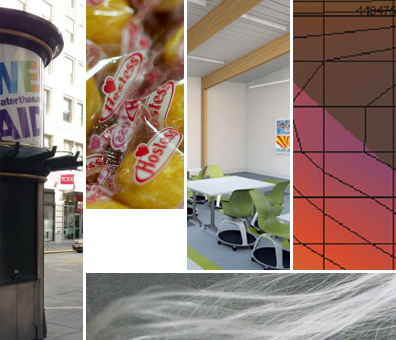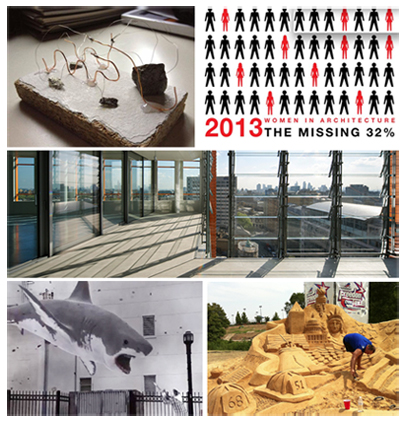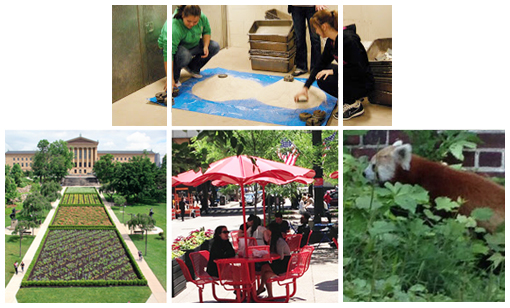BNIM on a Kansas City Streetcar. Lake|Flato and the Boy Scouts Jamboree. AECOM notes on the Venice Biennale. HOK, biomimicry, and the Mint Museum. Data vs. delight by NBBJ.

Streetcar in Kansas City. Kansas City has not seen a streetcar since 1957, but BNIM’s proposed “streetcar starter line,” would be a reintroduction of it.
BNIM’s work on the streetcar and light rail expansion will capture the initial momentum set forth by the streetcar for an entire new generation of users. While the region has considered light rail for decades, this project builds upon the foundation of recent success downtown.
Via BNIM Blog
New home for Boy Scouts. Matt Morris of Lake Flato discusses his visit to the new Summit Bechtel Family National Scout Reserve in West Virginia for the 2013 National Scout Jamboree.
The main purpose of the trip was to check out the Scott Visitor Center, which is currently under construction. The center will have a new dance porch that will host exhibits about the site, scouting and West Virginia. Meanwhile, the Boy Scouts have taken it over as a “patch trading” hub, a huge pastime in scouting where scouts set up under trees and along trails.
Via The Dogrun
Notes from the Venice Biennale. Daniel Elsea of AECOM writes about attending the vernissage of this year’s Venice Biennale held in June, an opening week of events, openings and parties that bring together the good and the great of the art world.
“For those of us who work in city-making, seeing one of the world’s most iconic cityscapes transformed into a contemporary art gallery – en masse – is a brilliant phenomenon. As it has for many decades, art today twists and turns notions of beauty; if often shocks; it overturns assumptions and it comes in dynamic forms – encompassing not just painting and sculpture, but architecture, video, sound, spoken word and performance, and three-dimensional media. It comments on the human condition today, reflecting anxieties and distorting realities. It requires an open mind.” – Daniel Elsea
Via AECOM’s Connected Cities blog
Museum inspired by biomimicry. Paul Wolford, design director in HOK’s San Francisco office, talks about how biomimicry inspired the vision for the San Francisco Museum at the Mint adaptive reuse project, which will be one of the country’s most environmentally innovative museums.
“When the city was founded in the 19th century, the San Francisco Bay’s edge and marshland area were just a few hundred feet from where the historic Old Mint building sits today. We suggested a design idea that incorporates lessons from the local biome while creating new ways to collect and store water.” – Paul Wolford
Via HOK Life
Future of workplace. NBBJ held its first salon event, Data vs. Delight, in partnership with Bloomberg Beta, to explore the changing dynamics of workplace design with the advent of big data.
Topics discussed included: What role does big data play in workplace design now that there is more of it and it’s easier to process than ever before? What degree do designers, who have typically relied on intuition to create space,a implement the technology into their practice? Is a physical office needed with more new technologies?
Via NBBJ Blog


 Embracing daylight. Architect Barbie. Texas sand sculpture. Alternative outputs. Sharknado is Twitter bait.
Embracing daylight. Architect Barbie. Texas sand sculpture. Alternative outputs. Sharknado is Twitter bait. Cities as living organisms. Pedestrian bridge for Buffalo Bayou. Phoenix Project soars. Perkins + Will explores open workspace. Oscar Mayer's Weinermobile Run.
Cities as living organisms. Pedestrian bridge for Buffalo Bayou. Phoenix Project soars. Perkins + Will explores open workspace. Oscar Mayer's Weinermobile Run. Design is a research project. Pattern of blooms receives recognition. Renaissance in the Windy City. Women in engineering. National Zoo uses social media to find missing red panda. Design is a research project.
Design is a research project. Pattern of blooms receives recognition. Renaissance in the Windy City. Women in engineering. National Zoo uses social media to find missing red panda. Design is a research project.